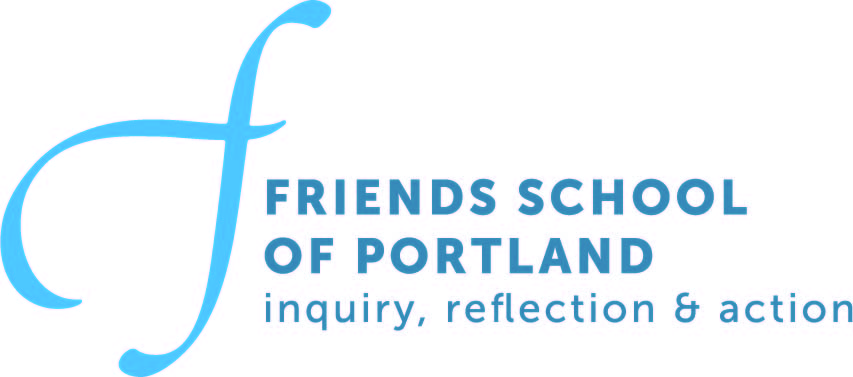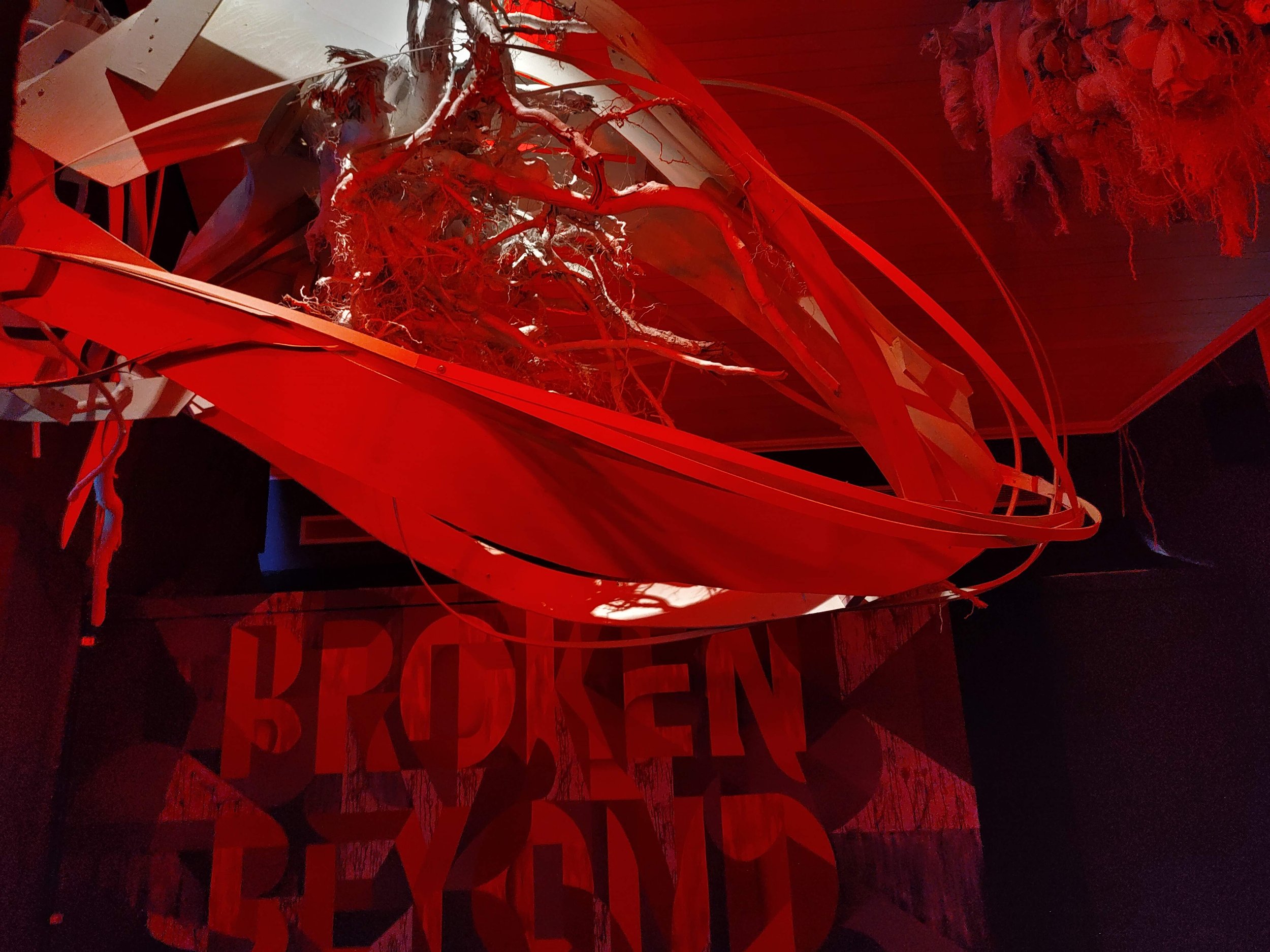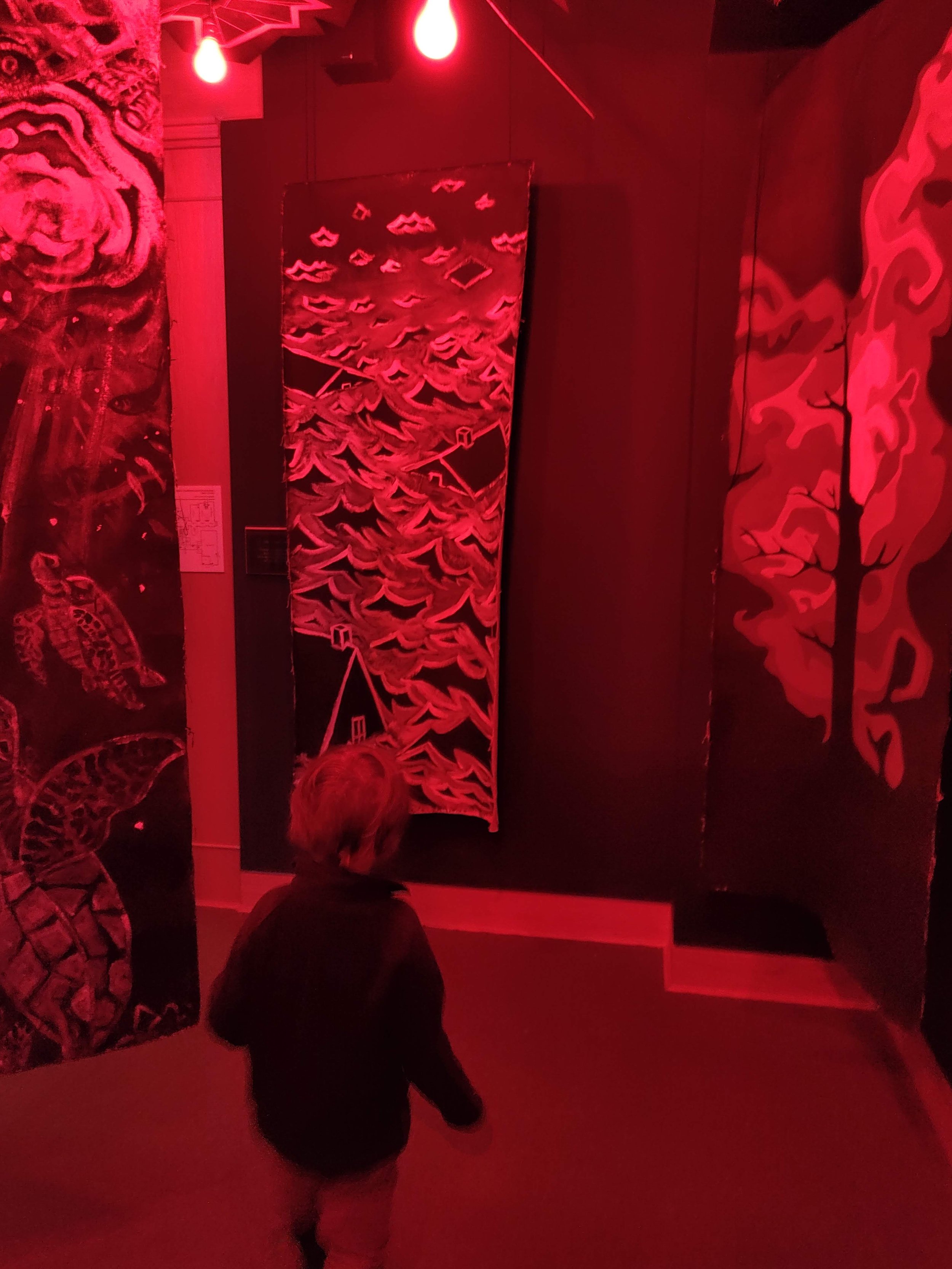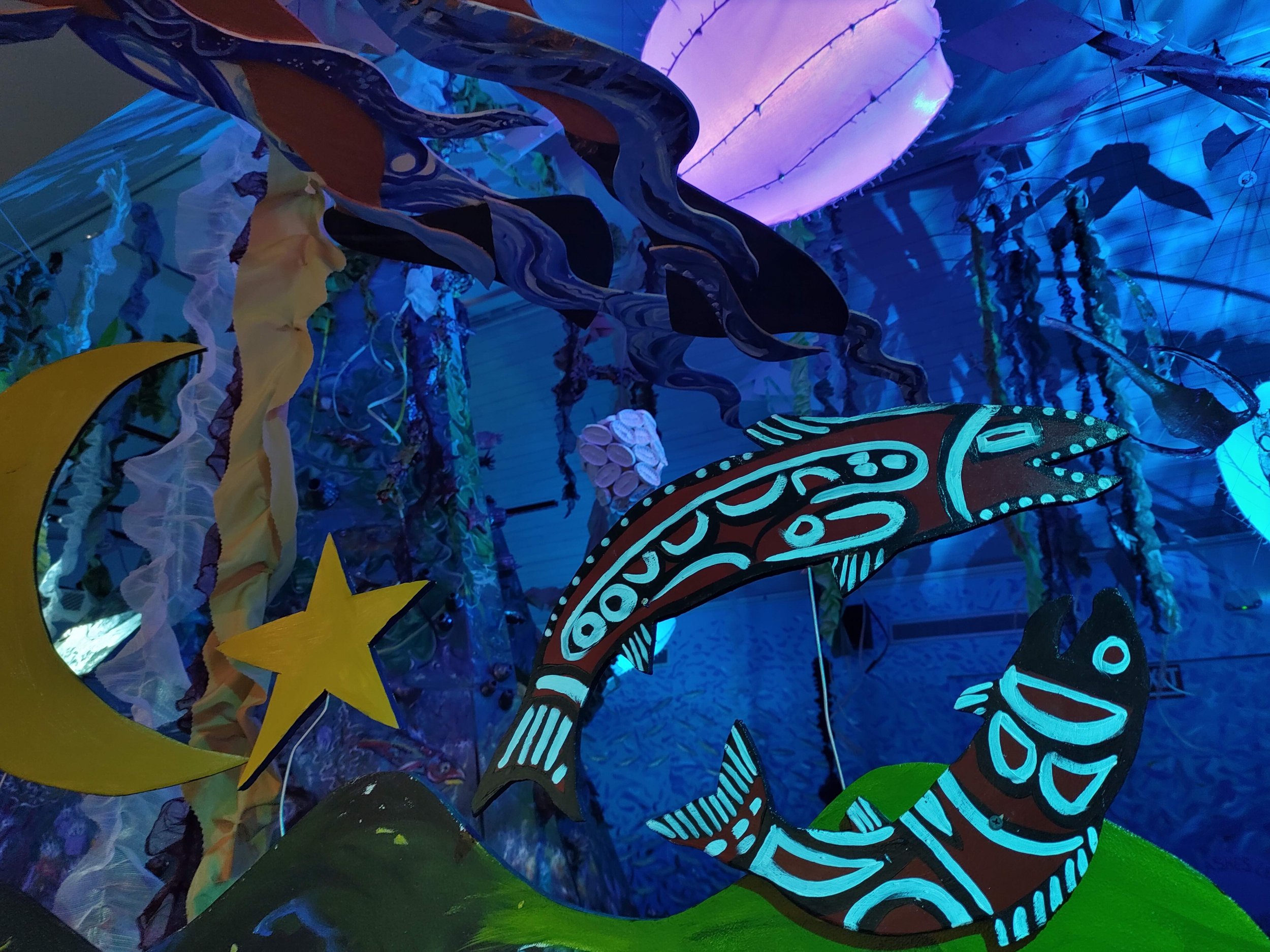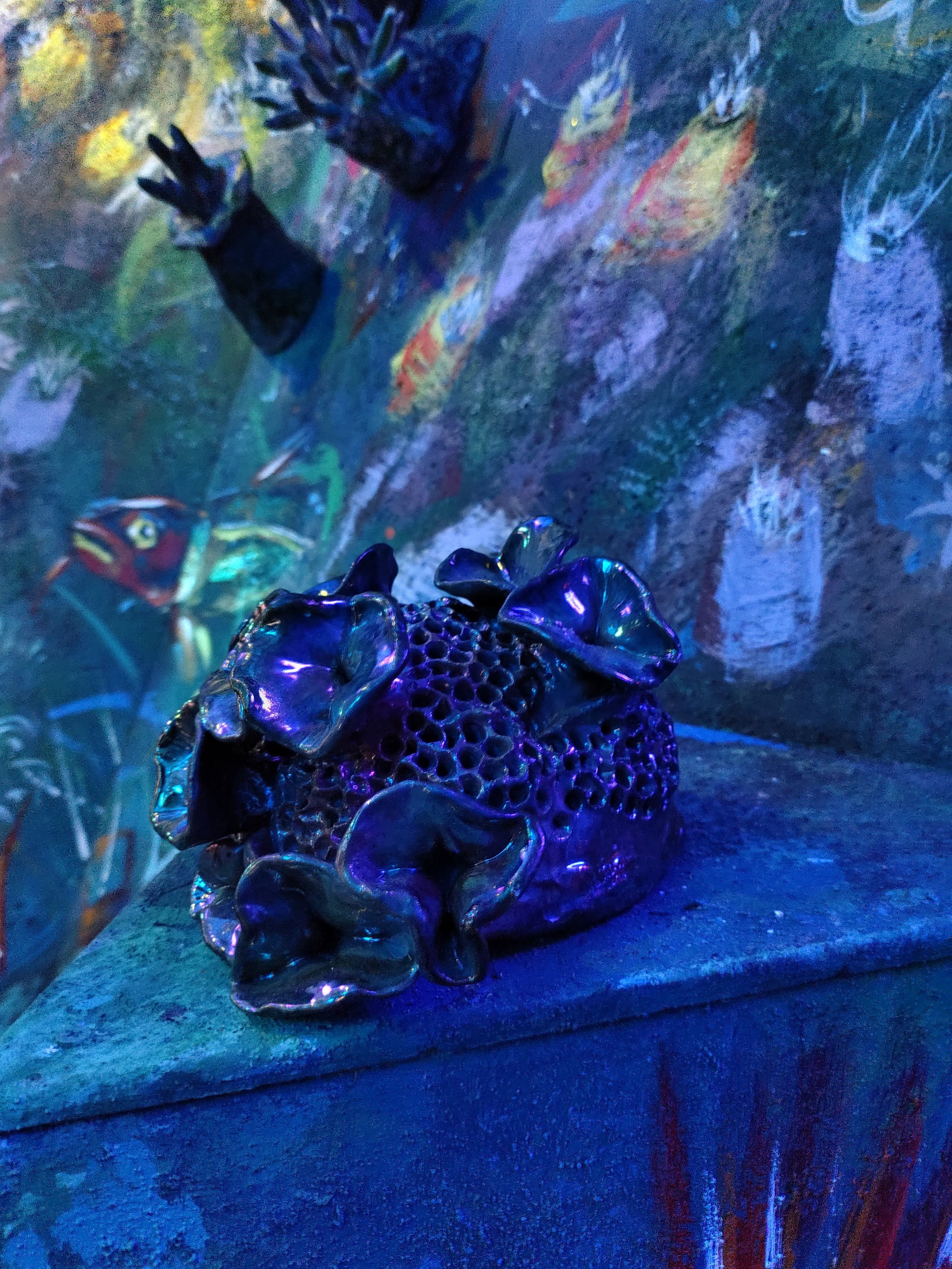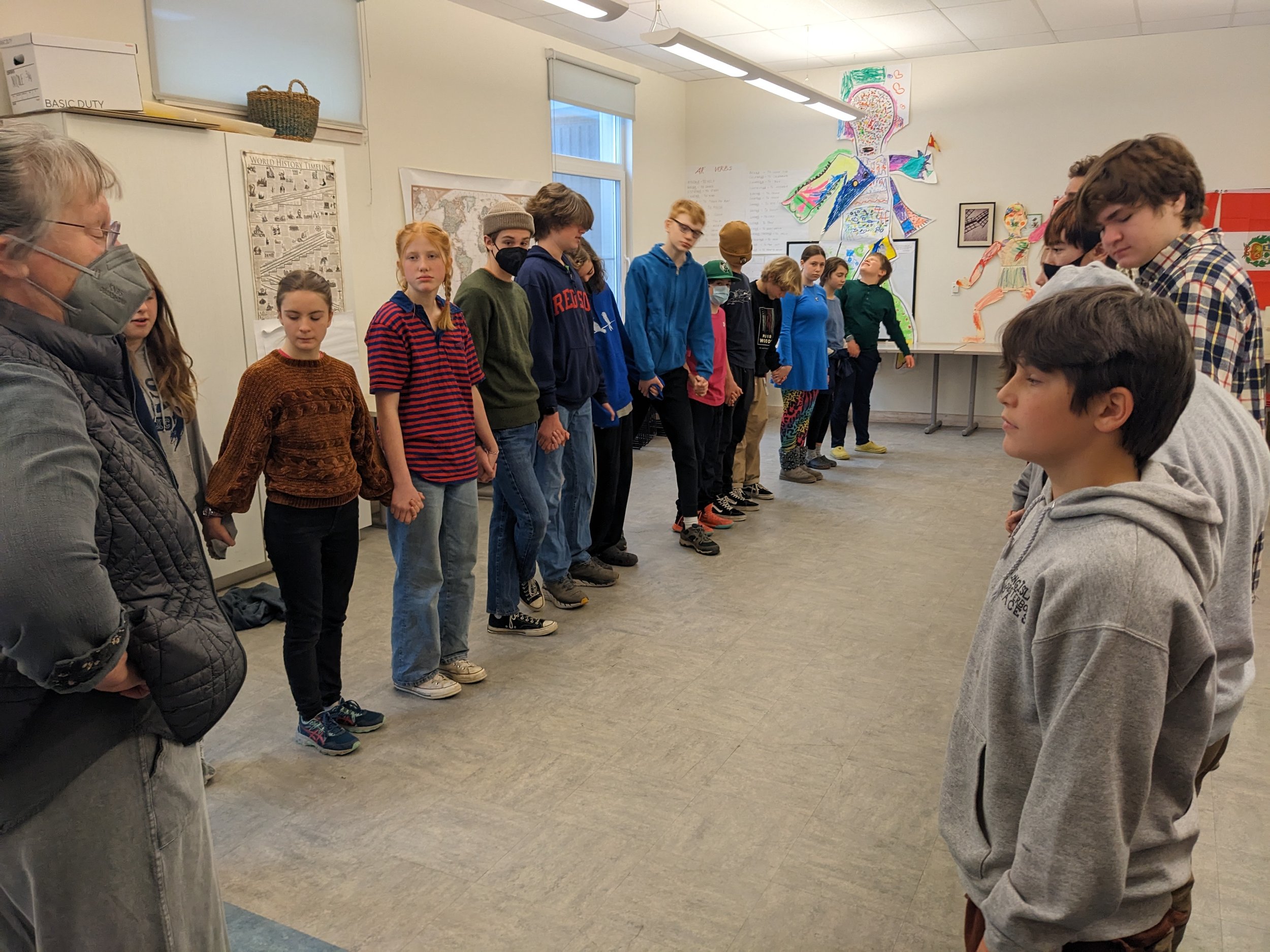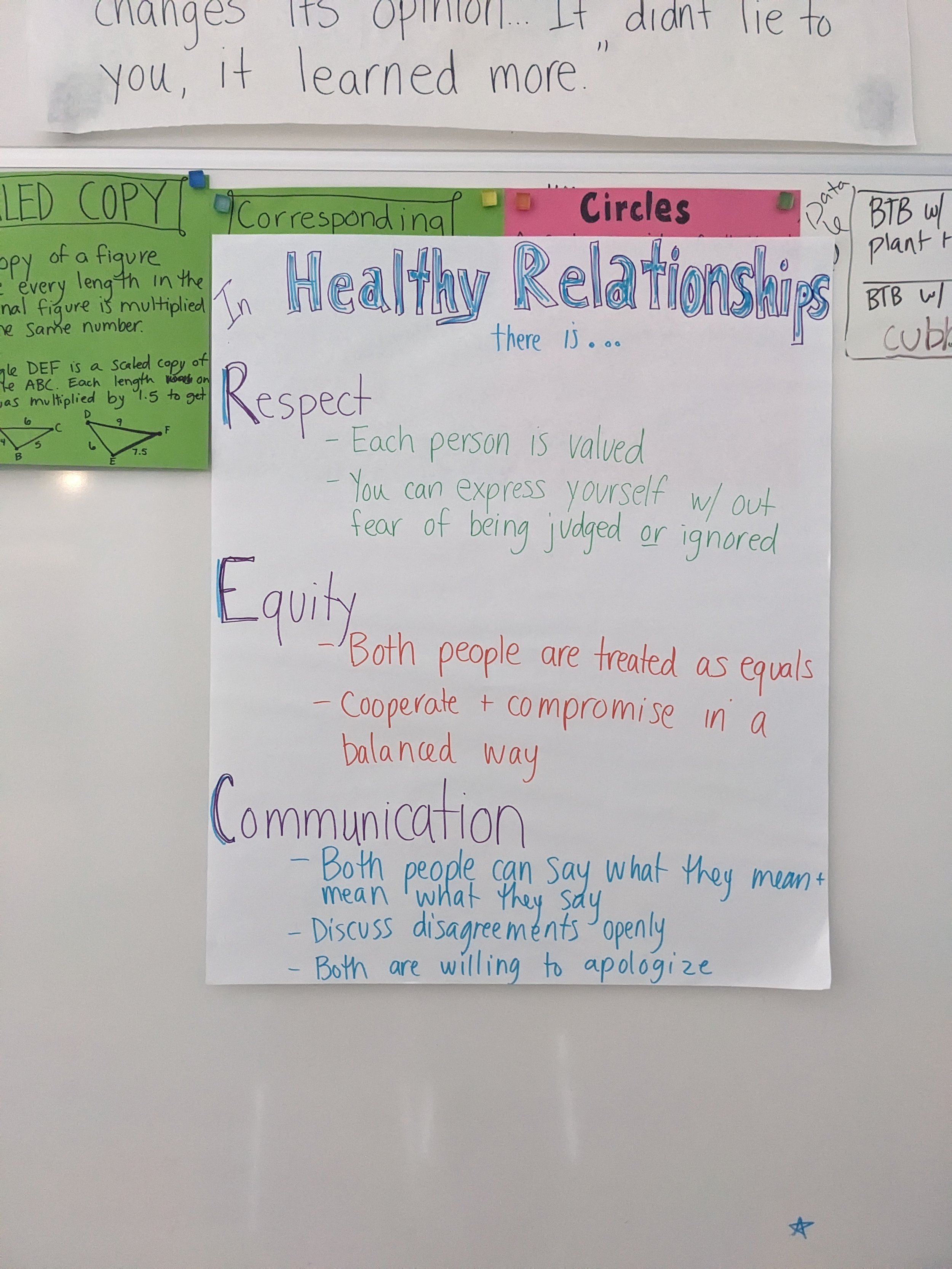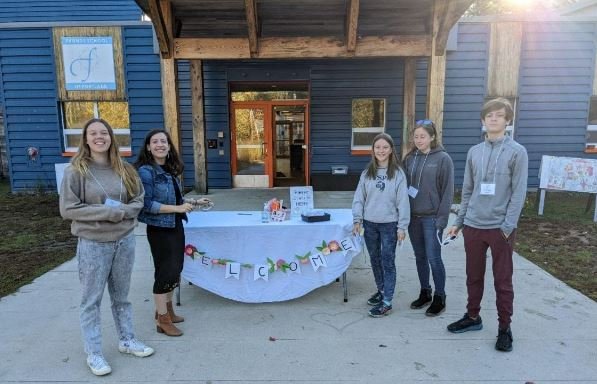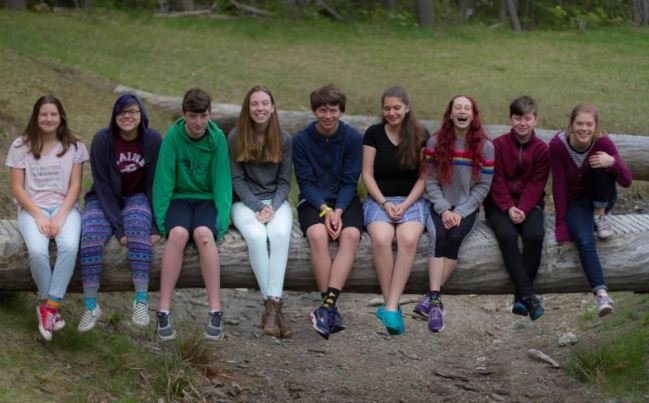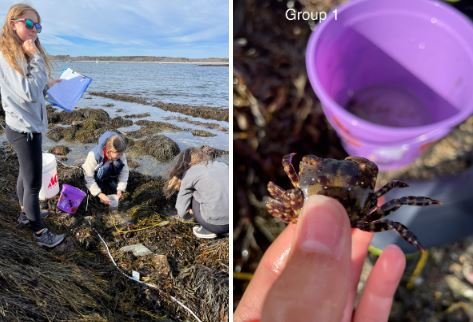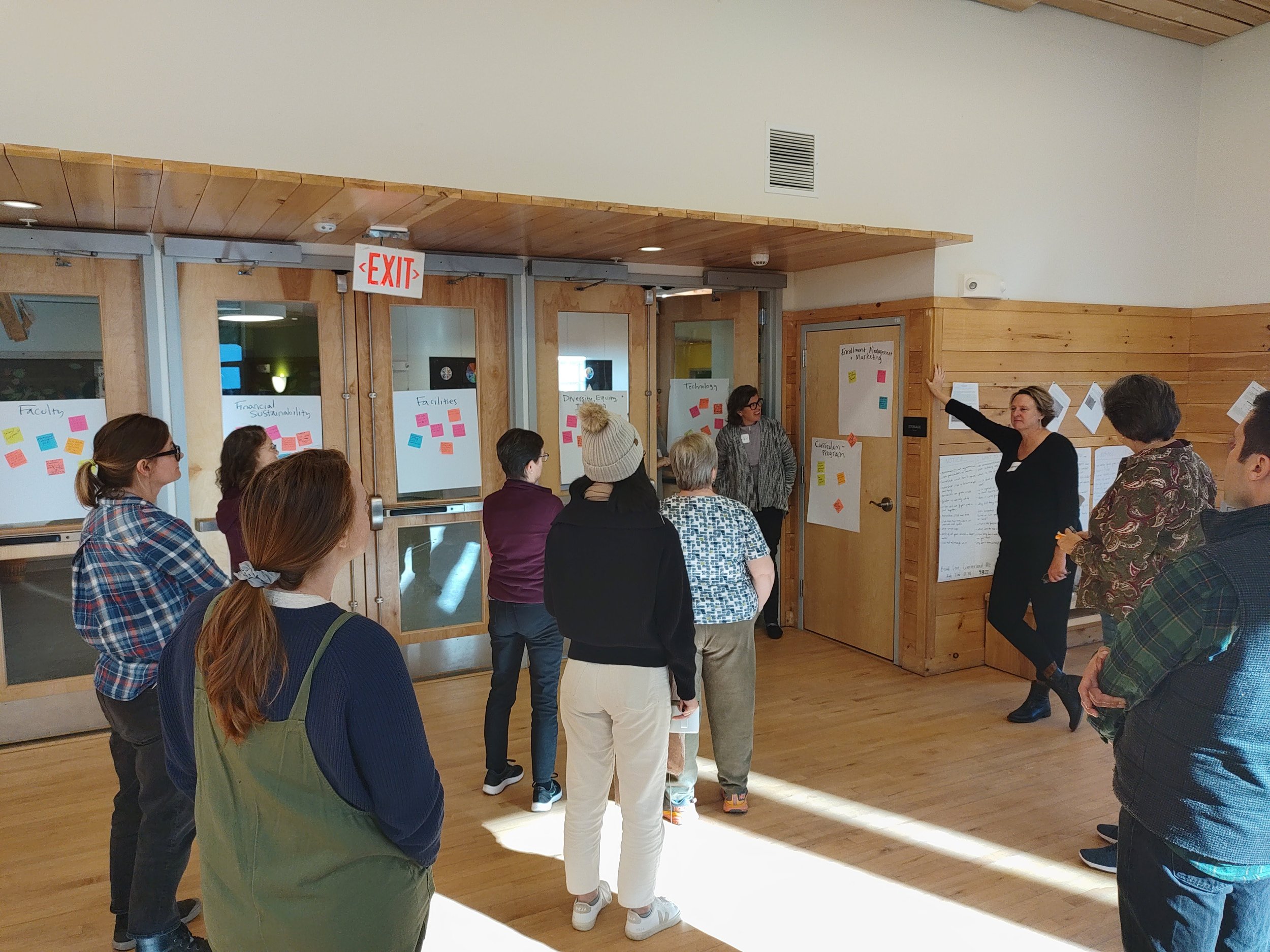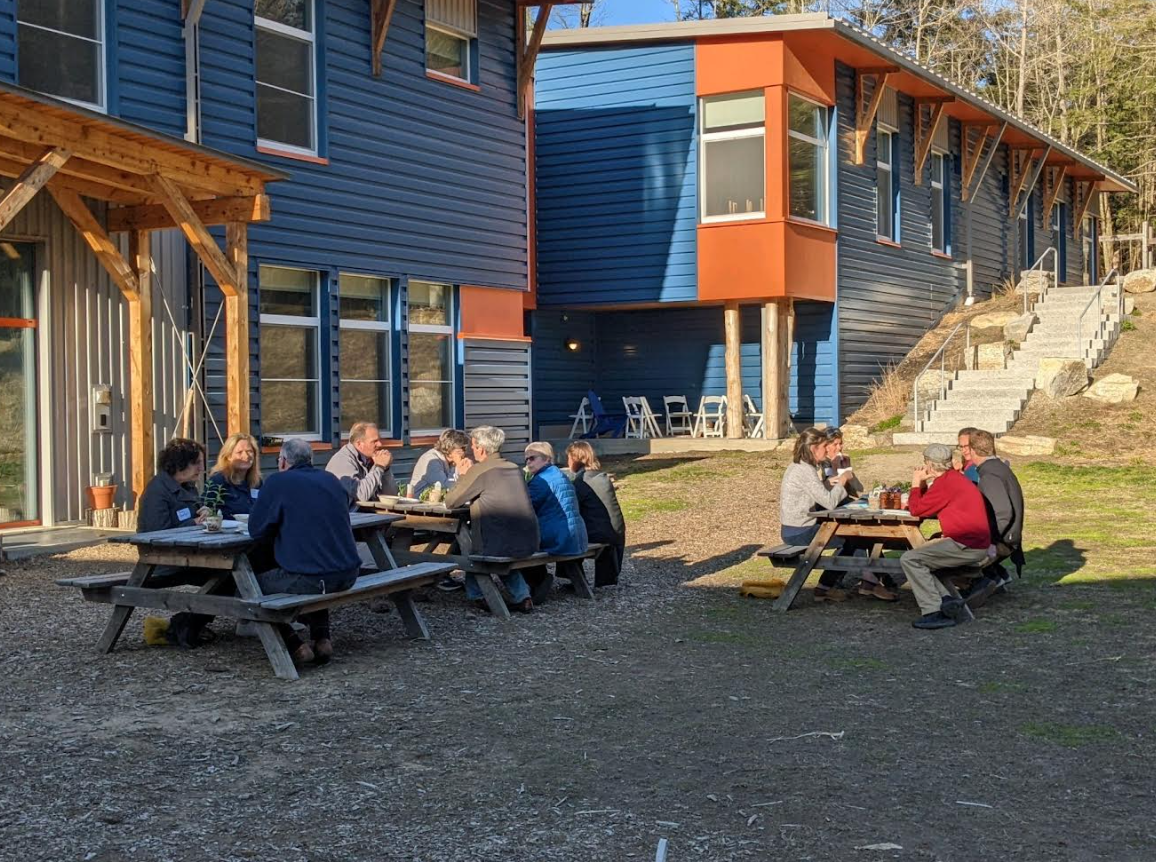Middle school students with Lee Chisholm at the SeaChange: Darkness and Light in the Gulf of Maine art installation.
Seventh and eighth-grade science classes recently visited Maine Maritime Museum in Bath and toured the new art installation with retired and beloved FSP teacher - Lee Chisholm. Sea Change: Darkness and Light installation was inspiring and students were left in awe. The project was led by Anna Dibble, Joe Hemes, and Lee Chisholm who are all connected to the FSP community. Many FSP graduates made contributions to this exciting exhibit including: Mira Hartmann ‘21, Anna Siegel ‘20, Bianca Peterman ‘14, and Otto Wolyniec ‘16.
Lee Chisholm and Otto Wolyniec ‘16 sat down to chat over Zoom about their recent involvement. Here are a few of the highlights and thoughts around this exciting exhibit.
Pictured above: Otto Wolyniec ‘16, Development Director Brooke Burkett, and retired 7-8 teacher, Lee Chisholm
Lee: Anna Dibble was the artist who made this exhibit come to fruition. I met Anna when she moved from Vermont back in 2018. This project had its beginnings back in the fall of 2018. The US had recently pulled out of the Paris Climate Accords and I put out a call for artists to help with paper mache to create a 7-foot codfish. Anna answered that call and with 350 Maine, we held a codfish funeral on the steps of City Hall in Portland with youth speakers.
At that time, Anna was visionary in reaching out to Bigelow Labs. An art installation “Majestic Fragility” was installed in the Fall of 2021. That installation would not have come about but for the group of far-seeing scientists, imaginative thinking, and openness to the arts that we encountered at Bigelow. It was this combination that often and uncannily leads to good things happening at the right time and with good people.
Then, the Maine Maritime Museum reached out and they were interested in a few pieces from the Bigelow Labs. This really led to a new and more ambitious concept… “SeaChange: Darkness and Light in the Gulf of Maine.”
Otto: Lee approached the conversation about the installation on one of our semi-annual calls. He first talked about an idea of a turtle being at the center. I was pretty hooked on this idea. Although, the turtle never came to fruition.
I worked on various paintings. One of the banners that I worked on focused on the negative aspects of climate change. The harsh realities of climate change: mass migration, casualties, oil spills, flooding.
And then this summer, the project was coming together in a space on Congress St. I did all the painting on the windows to share the project. I also created "Sam Cod" which might turn into a mascot or at least has a lot of potential for a bumper sticker.
I really enjoyed working with Lee and then Bianca too. Bianca was a chance meeting. I had been painting on the windows to share what was being worked on and Bianca walked in the door excited to see Lee and me and get to work.
Lee: It was really exciting to see Otto's work. Anna Dibble knew of Otto’s work and appreciated him as an artist before he was even helping. And then to have this chance encounter with Bianca. Good people, doing good work. FSP has really been a presence and a force in this project.
The motivation for this project was to have a vehicle to push back in the fight against climate change. Everyone has an awareness in varying degrees of what it is like in the ocean and the Gulf of Maine. Because of the urgency of what the scientific community shares, we need more awareness. Our question is really: How can we be a force for good?
The banner that Otto painted of flooded homes is shocking but beautifully done. It’s not just another photograph, it is good art. We need to reach people through good art.
Cashes Ledge is this mountain in the Gulf of Maine 80 miles from the coast of Portland. It is 30-40 feet from the surface, which means it is bathed in light, giving rise to the deepest, densest kelp forest in the entire Gulf of Maine. This underwater forest provides a nourishing foundation for an intensely rich marine habitat. With this art installation, we wanted the experience to be uplifting. Both metaphorically and literally, Cashes Ledge is uplifting, so we endeavored in this exhibit to bring it into visibility, into conciousness. Even as the Gulf of Maine is seriously challenged, even as the world is seriously challenged we asked ourselves: what can we do? And the answer seemed clear - strongly and lastingly protect Cashes Ledge, and as a first step toward this goal, use art to inform people of its existence.
Seventh and eighth-grade teachers, Nicole Favreau and Pete Nowak took their students to see the exhibit as it tied into their study of plastics. “It was inspirational for students to see. They have known Lee as a teacher, a passionate teacher. But it is quite something for students to see Lee as a person working in the community around what he is passionate about,” shared Pete.
An eighth-grade student shared, “When you walk into the exhibit, the first room is striking. It is dark and pieces of art are put in your way to disrupt your path purposefully. It is a trash apocalypse. And then you walk into this light-filled room that is beautiful and holds the hall of protectors. I’ve learned specific facts about plastics in the ocean but this was different. All the pieces that people made were amazing.”
The Maine Maritime Museum is open daily from 9:30am-5pm. SeaChange Darkness and Light in the Gulf of Maine opened this Winter 2023 and will remain open through December 31, 2023. It got rave reviews from the FSP 7-8 science classes and is well worth the visit!
